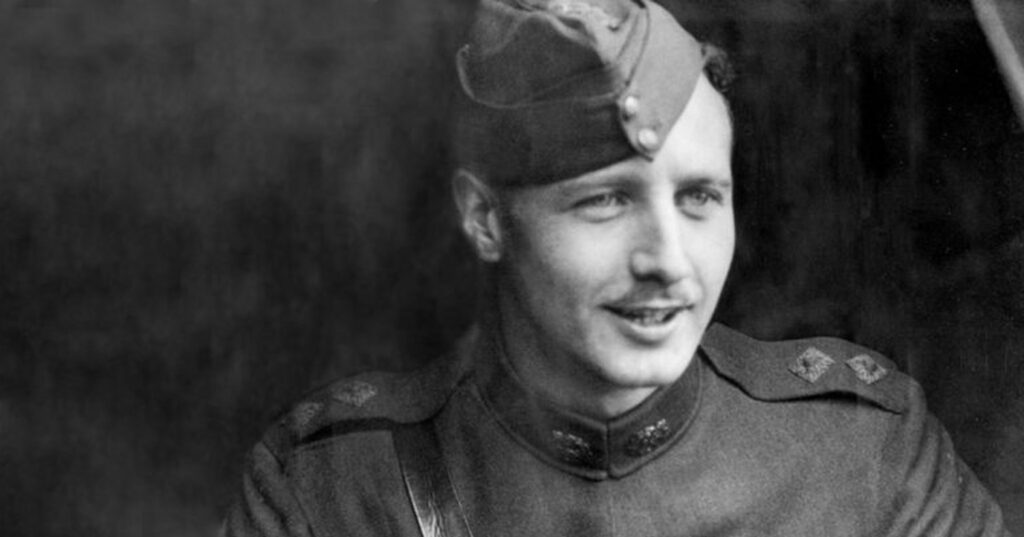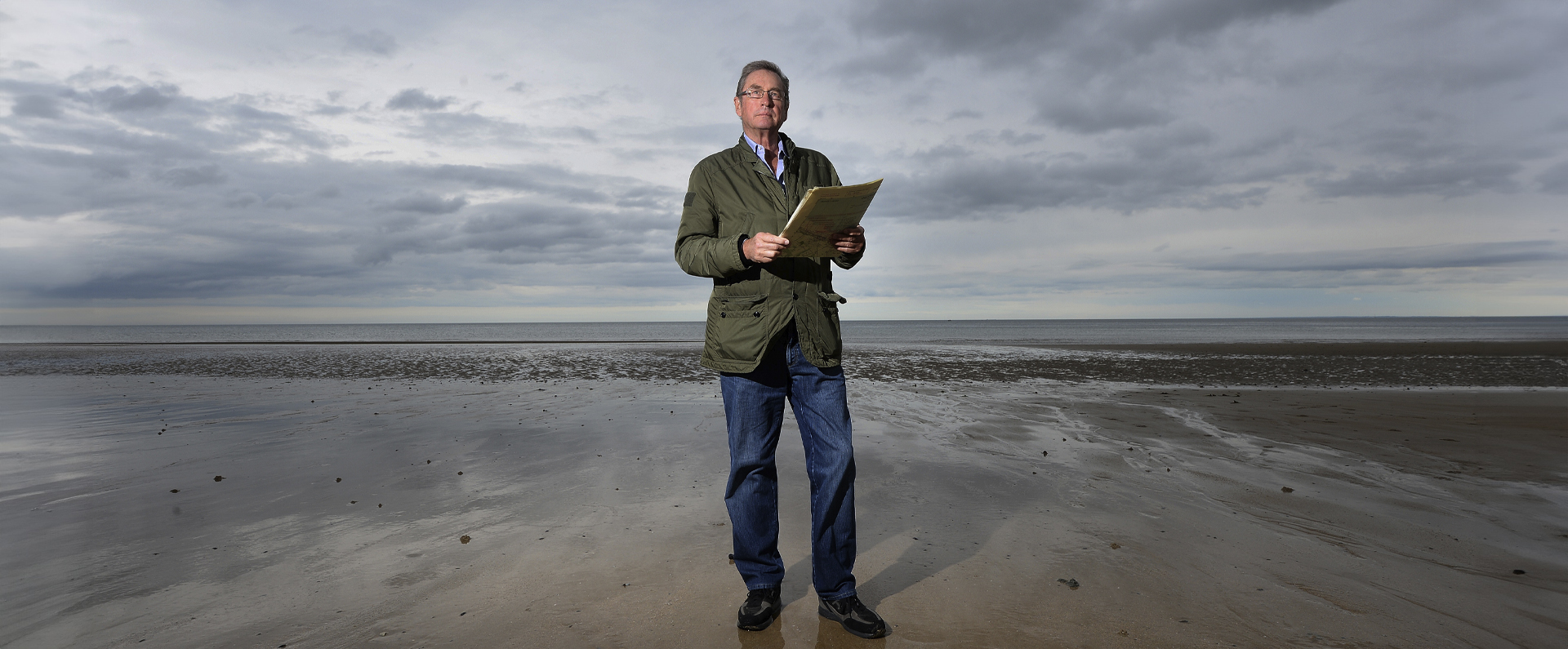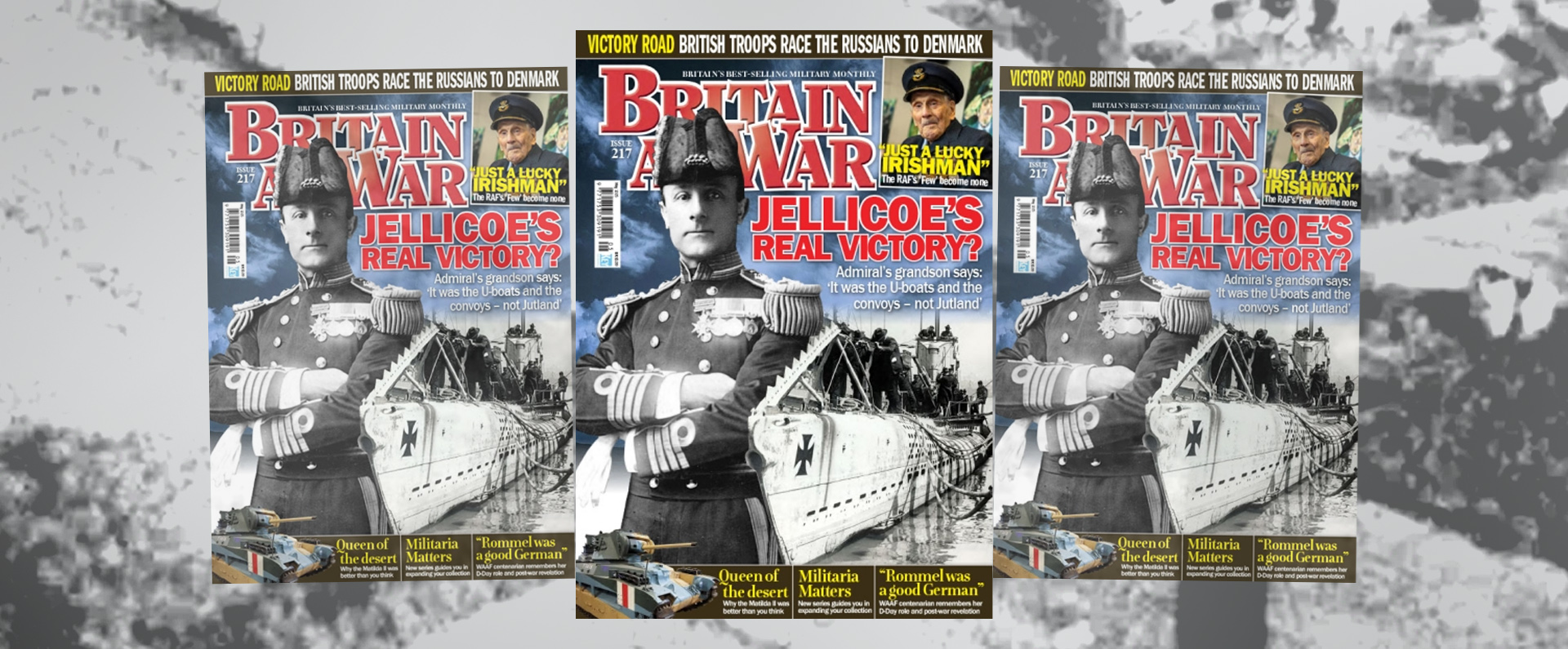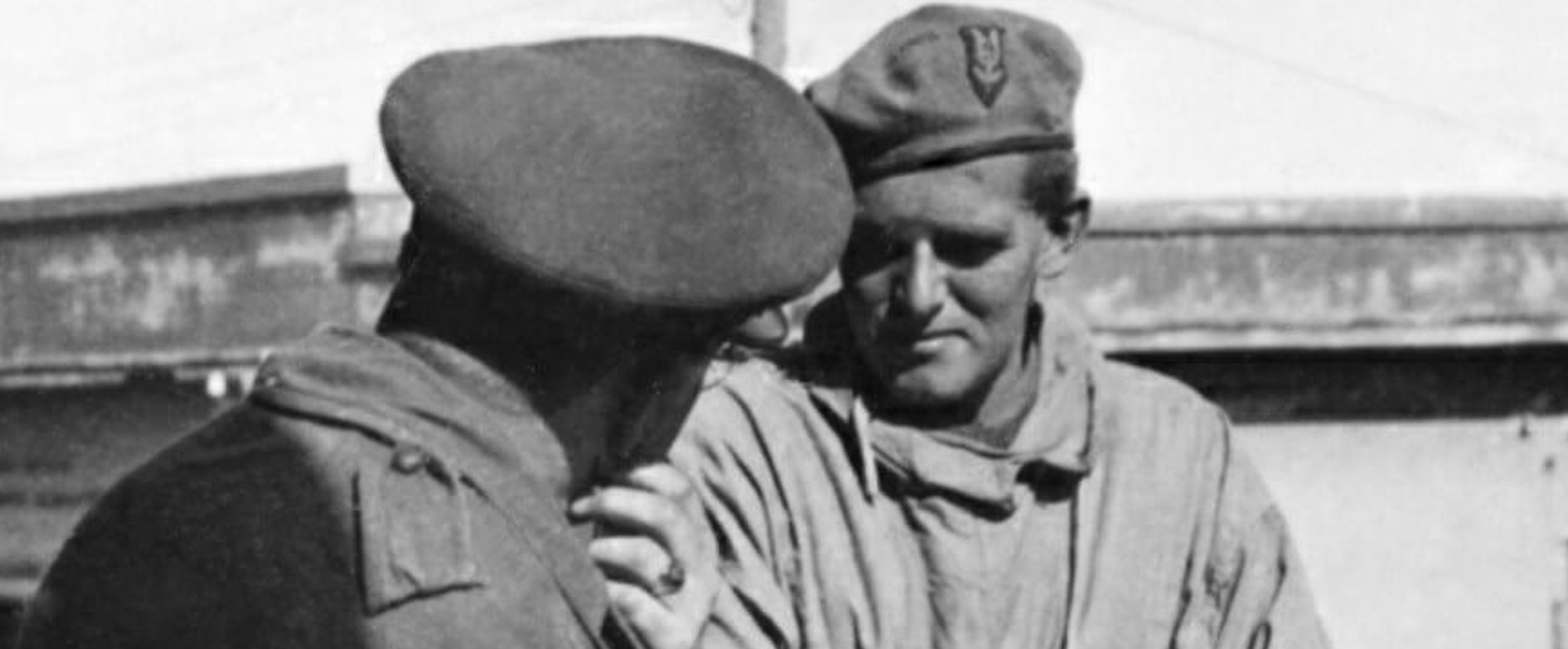
Published in the Sunday Telegraph on 03 November 2013.
William Leefe Robinson – The modest hero who ‘only did his job’.
The Great War was the first conflict in which British civilians came face-to-face with indiscriminate death and destruction on a regular basis while the nation’s fighting forces were absent at the Front. This was because of the regular use by Germany of Zeppelin airships and Gotha aircraft for bombing raids, often at night.
The Zeppelins in particular were much feared and initially, after being switched from reconnaissance to bombing missions, they seemed invincible. In fact, they eventually caused more psychological damage to the civilian population than they did physical damage. Largely because of the limited attack capability of early military aircraft, shooting down a Zeppelin became a formidable challenge for the Royal Flying Corps (RFC), forerunner of the RAF.
One of those given the task of defending his fellow countrymen from Zeppelin attacks was William Leefe Robinson. Leefe Robinson, known as Billy, was born on his father’s coffee estate in Tollideta, South Coorg, India, on July 14, 1895. At school he was never particularly academic, but he was sporty. In December 1914, he was commissioned into the Worcestershire Regiment and, in March the following year, he joined the RFC in France as an observer.
However, he was invalided home after being wounded over Lille. By September 1915, he had not only recovered but had qualified as a pilot and this led to postings to various Home Defence Squadrons. In a letter home, he explained his passion for flying: “You have no idea how beautiful it is above the clouds… I love flying more and more every day, and the work is even more interesting than it was.”
Lt Leefe Robinson had his first chance to shoot down a Zeppelin in April 1916 but could not get his aircraft into position for an effective attack. However, on the night of September 2/3 he was given another chance, after taking off from Sutton’s Farm airfield in Essex in his BE2c 2963 aircraft at 11.08pm on a routine “search and find” operation. Leefe Robinson’s first two hours in the air, flying at around 10,000ft between the airfield and Joyce Green, were uneventful. But at 1.10am he saw a Zeppelin caught in two searchlight beams over Woolwich, south-east London, and he set off in pursuit but lost it in the thick cloud.
Searchlights over Finsbury in north London had spotted another airship — one of 16 that night on a mass raid – and anti-aircraft guns opened fire. By this point, Leefe Robinson was beginning to run low on fuel but he gave chase and was joined, in another aircraft, by lieutenants Mackay and Hunt. Antiaircraft fire lit up the sky but the airship unloaded its bombs, which enabled it to gain height.
As Leefe Robinson closed in on his target, he emptied two drums of ammunition into the airship, but it flew on unhindered, still seemingly indestructible. He broke off but then made another attack from astern, firing his last drum into the airship’s twin rudders.
At last, his secret new incendiary ammunition took effect. First a reddish glow appeared inside the airship, then, moments later, it burst into flames. Thousands of Londoners looked up and cheered as the airship plunged from the sky, eventually crashing into a field in Cuffley, Hertfordshire. (In fact, Leefe Robinson had shot down one of the German army’s wooden-frame Schütte-Lanz machines — not strictly a Zeppelin — but the technicality was lost on both the public and politicians.)
Leefe Robinson landed back at Sutton’s Farm at 2.45am after a gruelling patrol of more than three and a half hours. He was lifted shoulder high to the edge of the airfield but, despite being exhausted and numb with cold, was then ordered to write his report. His fitters were alarmed to see that part of the aircraft’s central top wing and machine-gun wire guard had been shot away. After finishing his report, the pilot collapsed on his bed and fell asleep but, as he dozed, the ecstatic scenes of “Zepp Sunday” were already under way all over London.
Leefe Robinson’s exploits quickly made the headlines and for many people it was the finest moment in the war. Photographs of the pilot appeared in newspapers and magazines and he became instantly recognised all over the country. Britain’s wartime leaders realised that the shooting down of the first “Zeppelin” over the UK had massive propaganda potential and the opportunity should not be wasted. Such was the acclaim that, on a wave of public enthusiasm, he was awarded his VC in record time: little more than 48 hours after the event. Furthermore, he was the first man to be awarded a VC for an action in — or to be precise over — the United Kingdom. His VC was one of only 19 awarded to airmen during the Great War.
Leefe Robinson also received many honours and rewards, but his most cherished moment came when he was invited to Windsor Castle, where King George V presented him with his VC on the same day that the 16 crew members from the airship he shot down were buried. His VC had been gazetted just two days after his actions and he was presented with his decoration a mere three days after that. On the day that his award was announced, the Evening News had bills all over London proclaiming: “The Zepp: VC for airman”. Leefe Robinson was delightfully modest about his courage, telling well-wishers: “I only did my job.”
The report by Leefe Robinson, who had been flying with 39 Squadron, to his commanding officer on his historic flight was later made public. He wrote of the moment that he succeeded in downing the airship: “Remembering my last failure [minutes earlier], I sacrificed height (I was at about 12,900ft) for speed and nosed down in the direction of the Zeppelin. I saw shells bursting and night tracers flying around it. When I drew closer I noticed that the anti-aircraft aim was too high or too low; also a good many shells burst about 800ft behind — a few tracers went right over. I could hear the bursts when about 3,000ft from the Zeppelin.
“I flew about 800ft below it from bow to stem and distributed one drum among it (alternate New Brock and Pomeroy). It seemed to have no effect; I therefore moved to one side and gave them another drum along the side — also without effect. I then got behind it and by this time I was very close — 500ft or less below, and concentrated one drum on one part (underneath rear). I was then at a height of 11,500ft when attacking the Zeppelin. I had hardly finished the drum before I saw the part fired at glow. In a few seconds the whole rear part was blazing.”
In a letter to his parents dated October 22, 1916, Leefe Robinson reflected on his fame and told how he shot down the airship. “When the colossal thing actually burst into flames of course it was a glorious sight — wonderful! It literally lit up all the sky around and me as well of course — I saw my machine as in the fire light — and sat still half dazed staring at the wonderful sight before me, not realising to the least degree the wonderful thing that had happened!
“My feelings? Can I describe my feelings? I hardly know how I felt as I watched the huge mass gradually turn on end, and — as it seemed to me — slowly sink, one glowing, blazing mass — I gradually realised what I had done and grew wild with excitement… As I daresay you have seen in the papers — babies, flowers and hats have been named after me, also poems and prose have been dedicated to me — oh, it’s too much! I am recognised wherever I go about Town now, whether in uniform or mufti — the city police salute me, the waiters, hall porters and pages of hotels and restaurants bow and scrape — visitors turn round and stare — oh it’s too thick!”
Leefe Robinson’s good looks, fame and riches — including well over £4,000 in donations from wellwishers — also meant that he was hotly pursued by many young women. However, he was sent to France as a flight commander shortly after being awarded the VC, and in early 1917, while leading six of the new Bristol fighters, encountered Manfred von Richthofen, the so-called “Red Baron”, leading a flight of five Albatros fighters.
The short, fierce encounter that followed led to four of the Bristols being shot down, including that of Leefe Robinson.
After he was taken prisoner, the Germans realised his famous identity and his life was made all the harder for it. Having tried to escape four times in as many months, Leefe Robinson was court-martialled and sentenced to a month in solitary confinement. He was later taken to the notorious Holzminden prison camp. He was one of the youngest and most brutalised prisoners and his health suffered.
On December 14, 1918, following the end of the war, Leefe Robinson was returned from captivity but by then he was desperately weak. Subsequently, he contracted influenza, his health deteriorated and he became delirious, reliving the horrors of his time in captivity. On New Year’s Eve, Leefe Robinson — one of the greatest heroes of the war — died, aged just 23. He is buried at the cemetery extension to All Saints churchyard in Harrow Weald, north-west London.
Leefe Robinson’s achievements have been marked in several ways since his death. Among them was a monument near where the airship crashed. This was renovated in 1986 and again in 2009. Another monument was erected in 1921, in East Ridgeway, Cuffley. A road, Robinson Close, was named after him in Hornchurch, Essex (where the original Sutton’s Farm airfield was).
In April 2010, to celebrate the 100th anniversary of the Great Northern Route extension that connects Grange Park to Cuffley, the First Capital Connect rail company named a Class 313 train Captain William Leefe Robinson VC.
I bought Leefe Robinson’s VC at Christie’s in 1988 and his gallantry and service medals are on display at the Imperial War Museum in London. Among the memorabilia that came with his medals is a “lucky” bent halfpenny that, when in his pocket, was hit by a bullet when Leefe Robinson was shot and wounded over Lille in 1915.
Download a PDF of the original Sunday Telegraph supplement
For more information, visit:
LordAshcroftOnBravery.com


